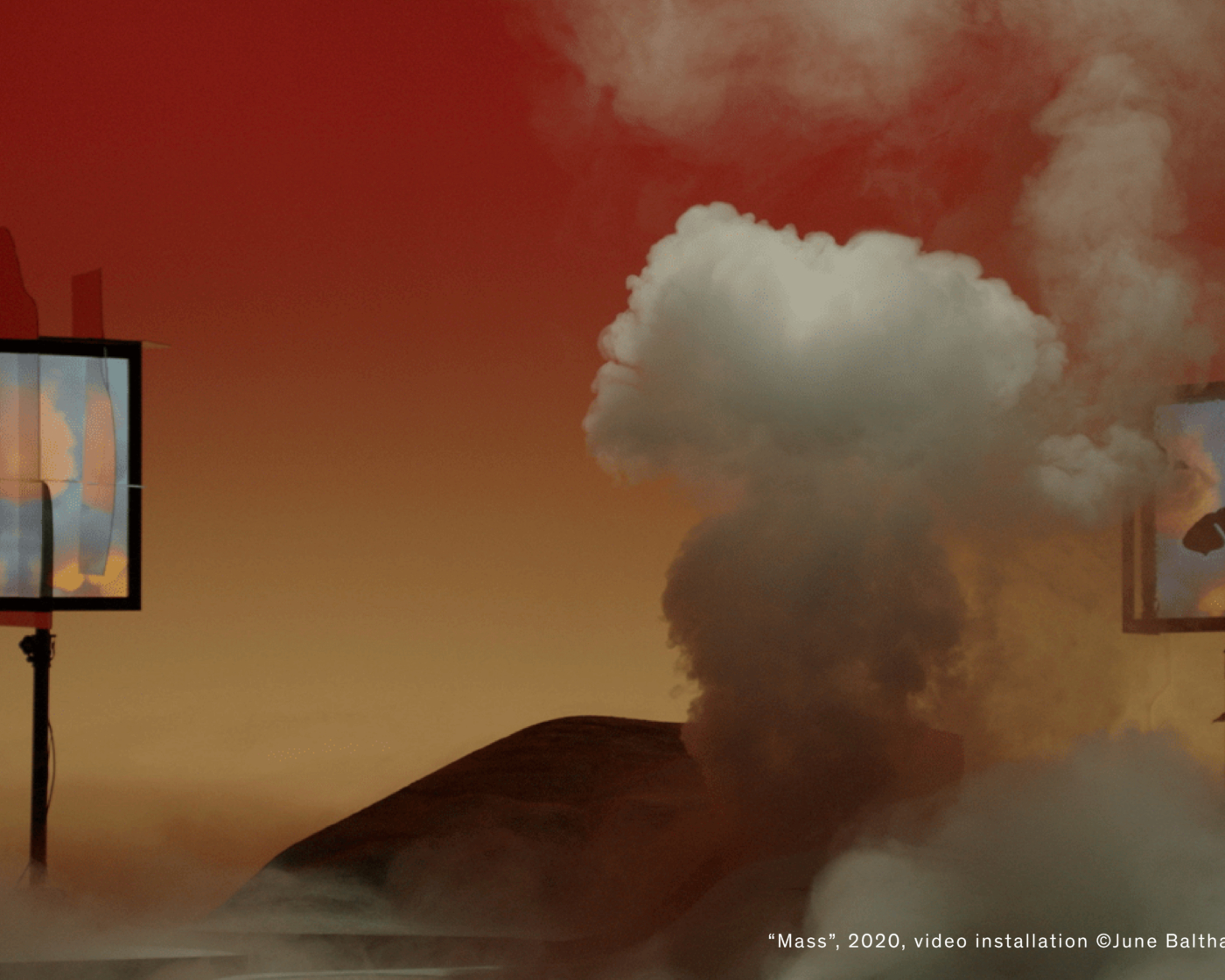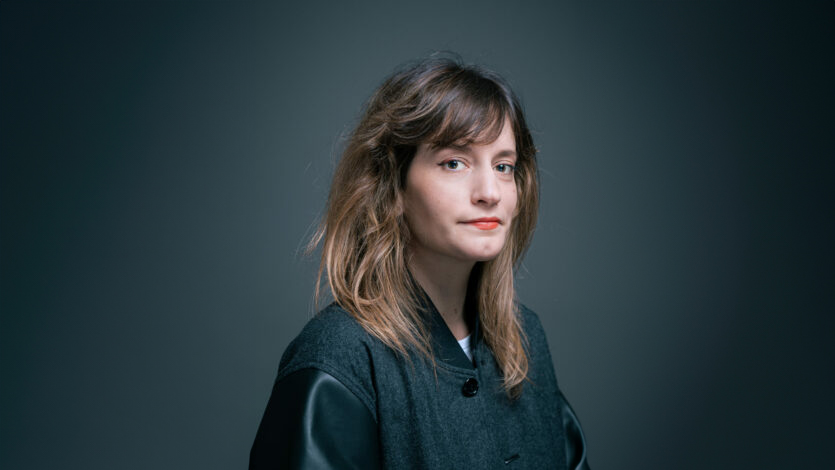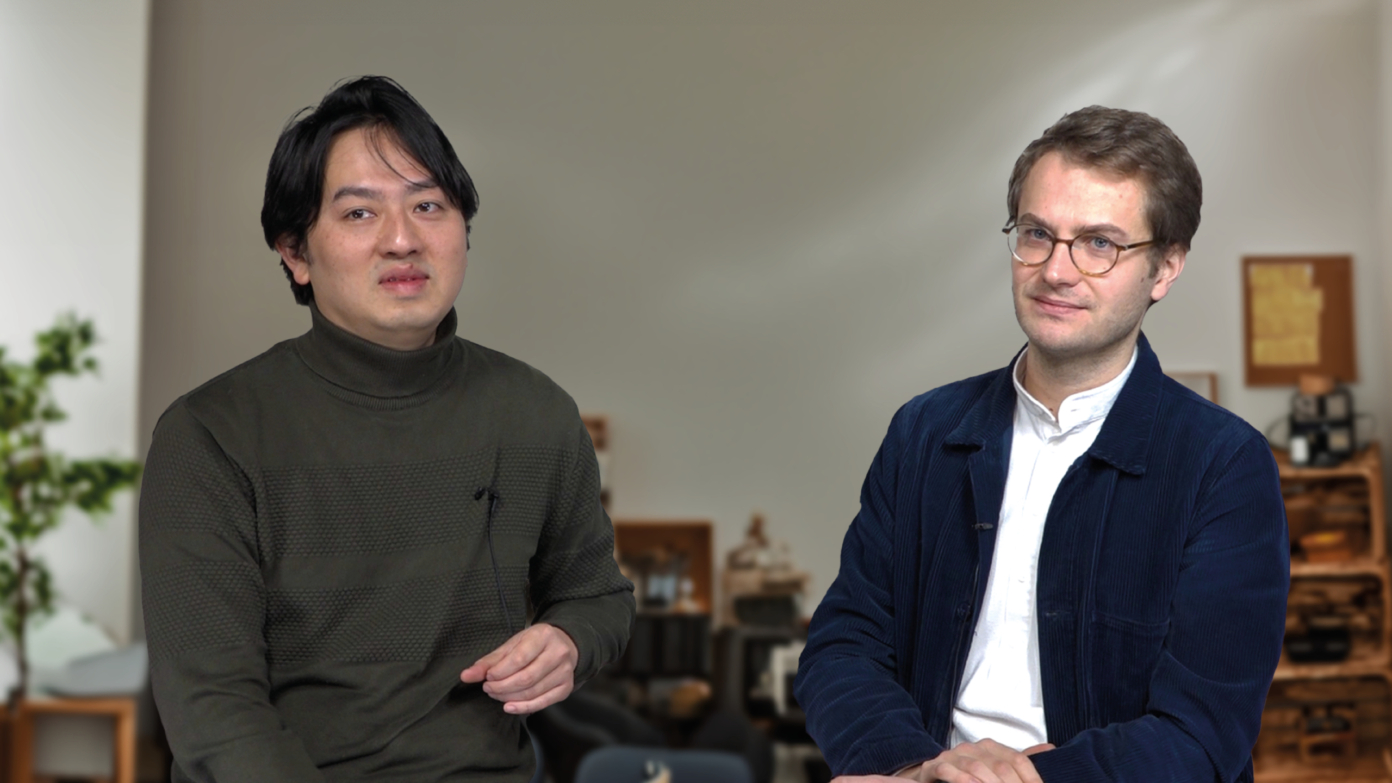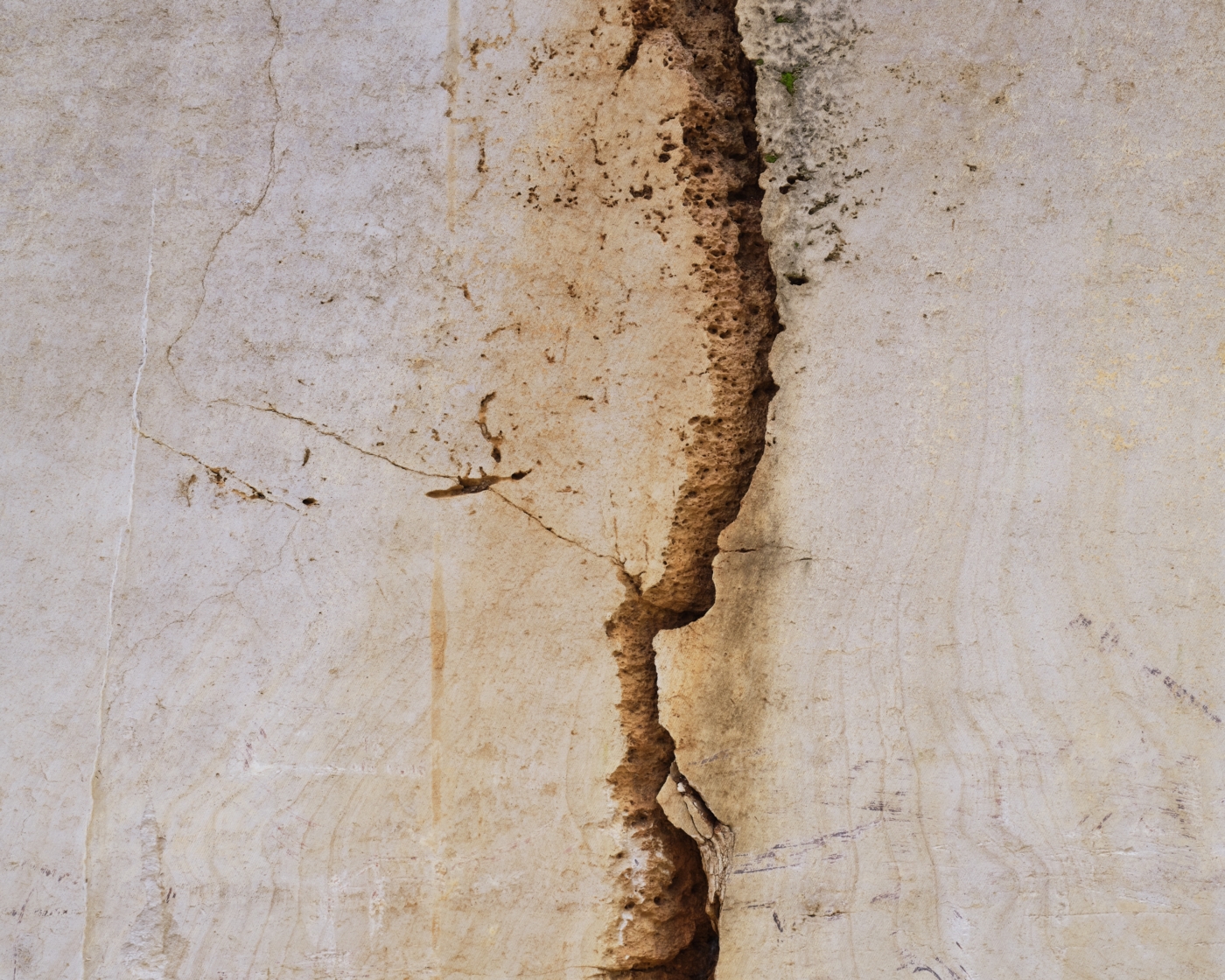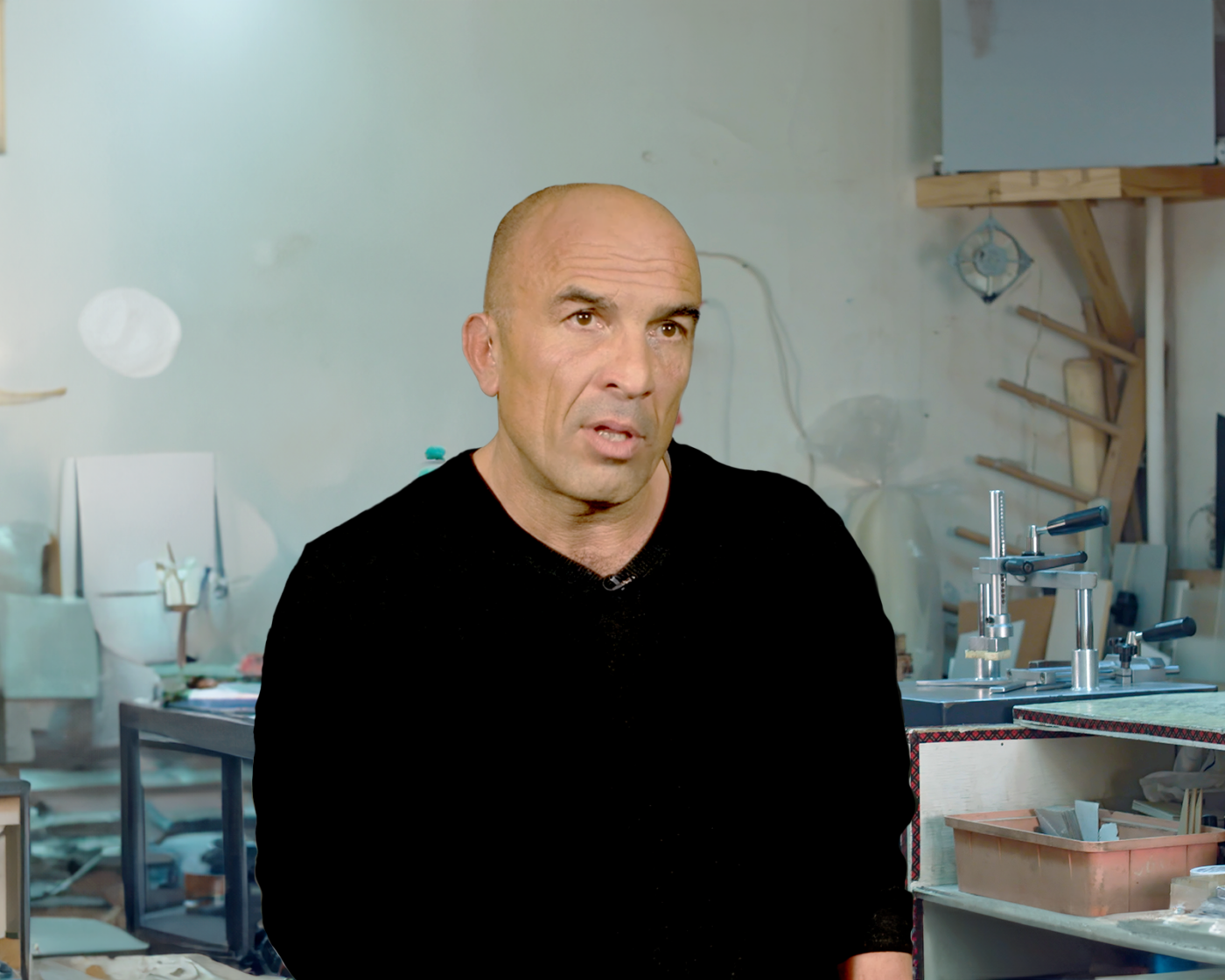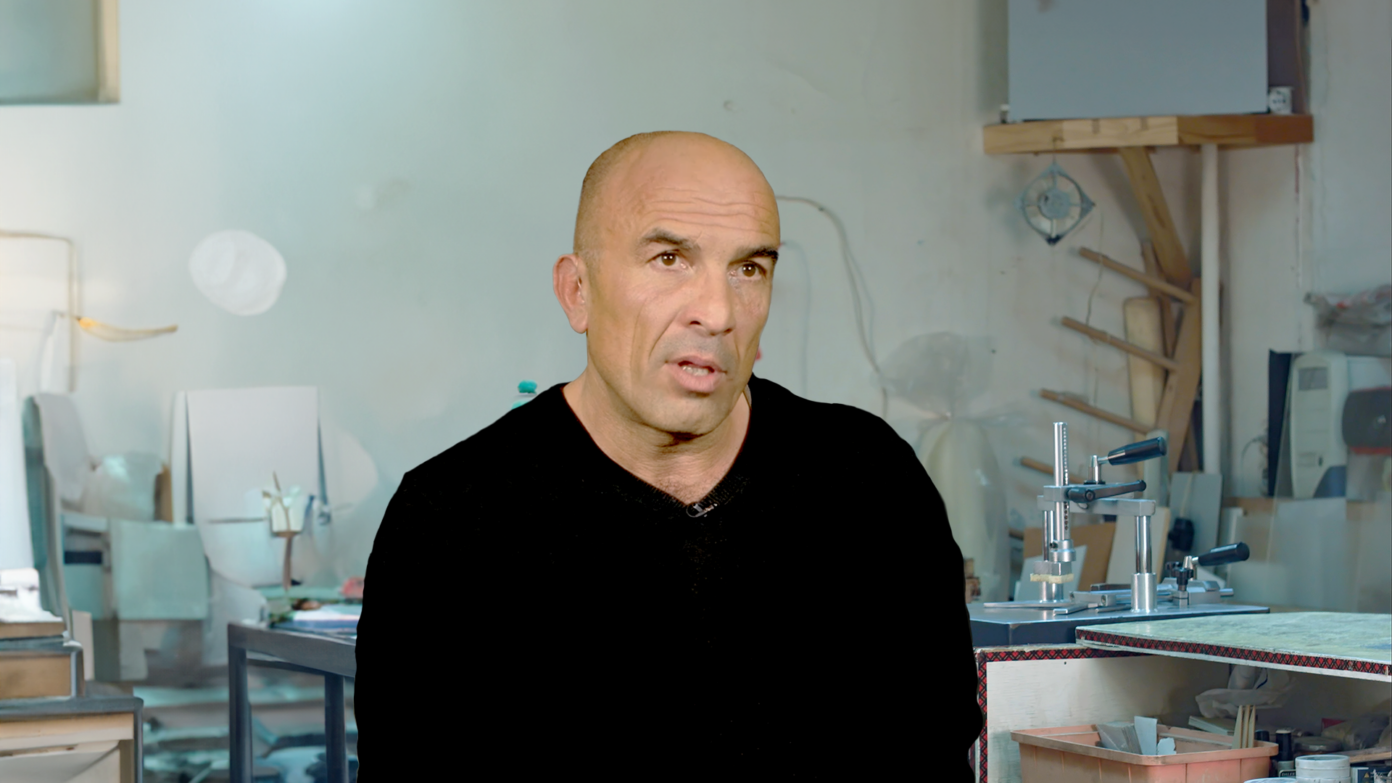Self-assembly & programmable materials
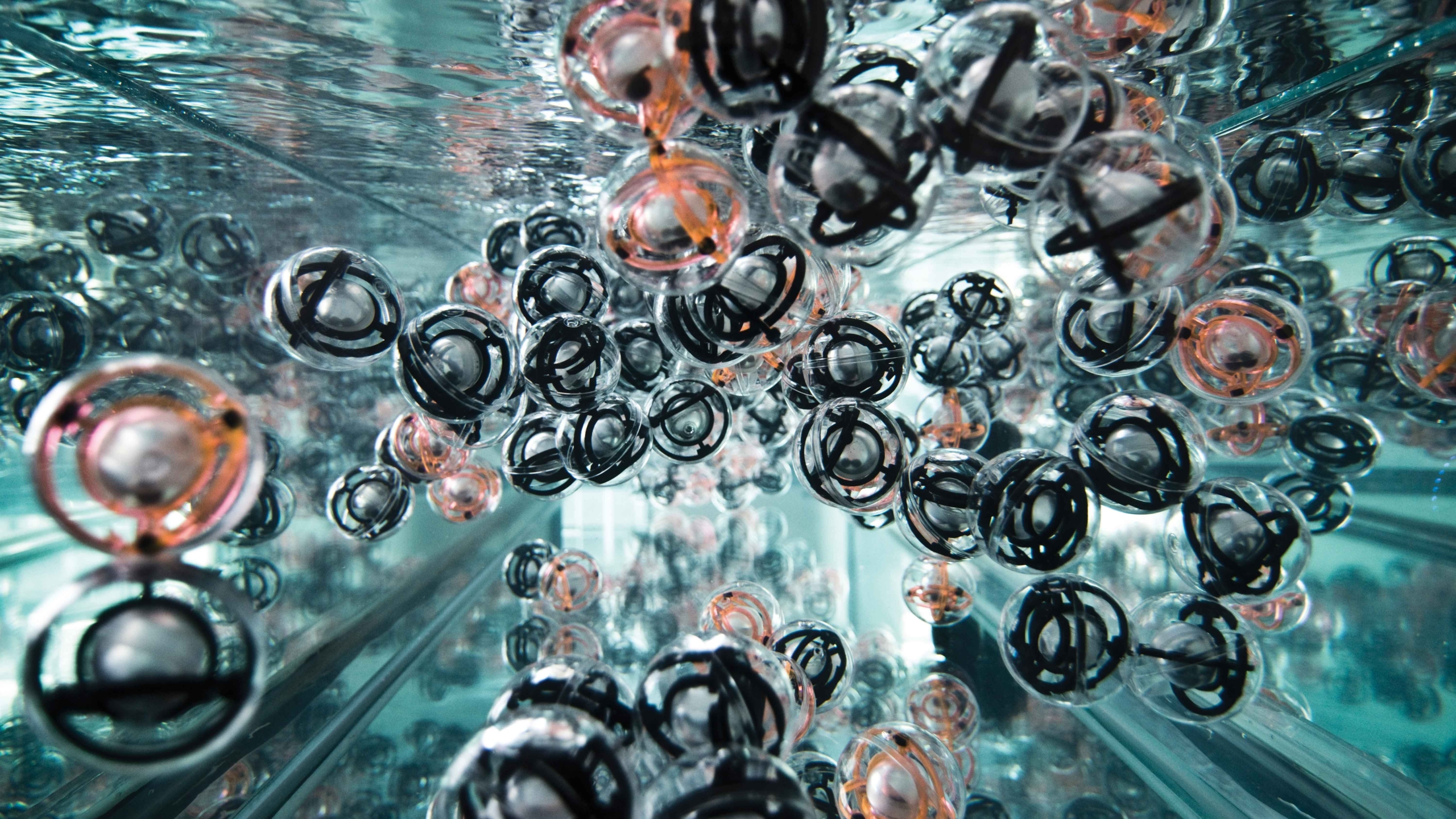
- Publish On 19 April 2017
- Skylar Tibbits
According to Skylar Tibbits, we are living a period of revolutionary convergence between programming capabilities, biology, physics and nanotechnologies. Bolstered by these scientific breakthroughs, he works with his lab at MIT (the Self-Assembly Lab) in two main directions: self-assembly and 4-D printing of programmable materials, which accounts for the dimension of time, and changes in the behavior of materials when specific conditions are met and according to predefined scenarios. The development of these technologies will allow him to return to the scale of architecture, with elegant solutions in terms of both engineering and form to address the challenges of contemporary construction.
Skylar Tibbits is an architect and director of SJET LLC. He is a researcher and teaches at the MIT, where he is the director of the Self-Assembly Lab.
Stream: We are working on the idea that we are living in an age of anthropological rupture. In your field, do you think that we are going through a period where something genuinely new is happening? Do you think our situation in coming centuries will be deeply different from what it was before ?
Skylar Tibbits: It depends on what field you’re talking about. If we’re talking about architecture in general, I’m not sure a revolution is happening, but if you’re talking about the convergence of multiple topics across disciplines, I think this is a very important moment, maybe even a revolution, in which we may discover computation and programmability across scales and across domains. If you look at what’s happening in synthetic biology, DNA nanotechnology, material science, robotics, through to manufacturing, etc., there’s a kind of boom in the ability to program physical materials, find computations, and utilize that on a different scale, outside software. Some people describe that by saying that hardware and materials are the new software, but this is happening across the board. I don’t know if that’s specific to architecture or if it’s even present at all in architecture. I think it’s real revolution happening across multiple domains.
Towards active and smart materials
Stream: We are not focusing only on architecture, but on the underlying forces that may produce a revolution in architecture in the future. This is what we’re trying to understand and maybe anticipate for the future, but the way architecture is produced can make it slow to adapt to this revolution. This notion of convergence between different disciplines is certainly characteristic of what we are seeing. Could you start by explaining the content of your own research at MIT, at the Self-Assembly Lab, and in the field of 3-D and 4-D printing?
Skylar Tibbits: The research follows two main streams: one is self-assembly and the other is programmable materials. This was all initiated originally under a programmable matter grant from DARPA (the Defense Advanced Research Projects Agency), the idea being that if you can program matter across scales and across domains, you can have a change in shape, in performance, transformation, etc. I think one of the key, unique points about our lab is the scale of the applications that we’re focusing on. We’re trying to find ways that self-assembly and programmable materials can be utilized in industrial-scale applications like products, manufacturing, construction: macro-scale scenarios. As I mentioned before, there’s a real revolution happening on many other scales and many other researchers are looking at self-assembly, material science, synthetic biology, chemistry, etc.
The idea behind self-assembly is that you have independent separate parts that come together to form precise structures, and they come together based on their interaction with external and internal energy. That happens in many different domains, but it is just something that hasn’t become utilized at the human scale. We’re trying to argue that this can function as a manufacturing application—you have a bunch of components that you bring together in a final product.
As for programmable materials, this relates more to how you interact with materials on a daily basis. Normally, materials come in strands, sheets, cast objects, fibers, etc. The idea behind programmable materials is that you should be able to program these fundamental materials to change shape or behavior, to transform in some way so that we have more adaptive, responsive products, so that they can reconfigure themselves, among other things. These are different, but related domains, as they are all at the macro scale.
Stream : What are the scientific breakthroughs that are making this new research possible?
Skylar Tibbits: It’s an interesting question because if you look even six years ago, when there was this programmable matter grant, almost everyone looked at programmable matter as a robotics solution. It’s indicative of how quickly things have changed that if you talk to the prominent figures in this field, many of them are shifting away from our conventional notion of robotics and looking at much more materials-driven, soft systems, biology-driven opportunities. I think there are a couple of reasons for this. It’s almost like when you have a big problem that you need to solve, mechanically or technically, if you put in enough money, computing power, sensing motors, etc., you can usually overcome the problem. I look at that as the first wave.
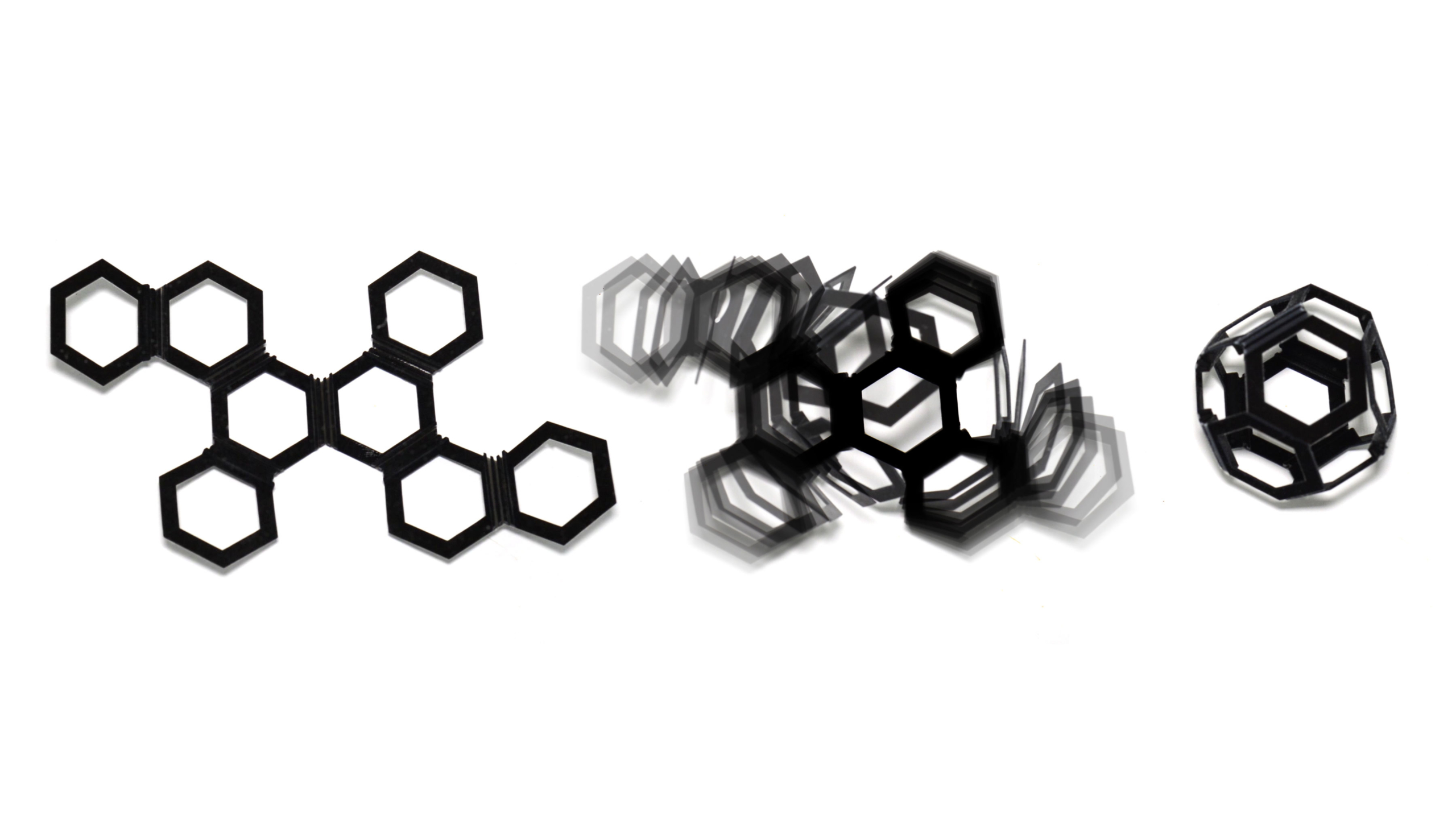
Over time, hopefully the solution gets more and more elegant, more and more robust, cheaper, more scalable. I see that shift as the ability for materials to change shape, reconfigure, reprogram, etc. We’re now able to use them in a much more elegant way. Some of the things that have been important for that shift are new discoveries in material science, the whole world of smart materials, the understanding that we can use self-assembly as a manufacturing process at the material level. Many materials are being discovered and produced right now using self-assembly. Synthetic biology is huge in that space. The thought that we can program biology similarly to the way we program electronics—we can compute, store information, and engineer new systems using existing fundamental components—I think that’s huge.
And finally there is 3-D printing and additive manufacturing. That was around before, but there is a lot of hype and investment in the development of the hardware and materials. That’s pushed us to the idea process that printers can be a tool, but they can also become catalysts to say, “If we have this new technology and everyone’s arguing that it’s revolutionary, whether we agree with that or not, why don’t we use these machines to produce things that we could never have produced in previous processes?” I don’t just mean shapes, I mean using them to build up macro-scale materials that have very different properties and program those materials to change shape and function. Instead of trying to say, “Let’s get plastics that are very similar to today’s plastics, or let’s get metals that are close to metals, why don’t we try to design active materials that can be smarter?” I think that all three of these things—synthetic biology, the revolution in material science, and additive manufacturing—have led to much more elegant solutions for programmable matter.
Learning from biology
Stream: I think you participated in ArchiLab a few years ago. There is an interesting shift in what we saw six years ago, which was very much shape-driven in the beginning of the 2000s. The focus was on producing new form. Today it looks like this relationship with biology has changed. It is no longer so much about form itself as a sculptural question, but more about the final objective, the more ecological question of having architecture being able to better respond to its environment. Is this something that has influenced your work?
Skylar Tibbits: In the 2000s, what kick-started my career was the introduction of computation into the design world. That probably started with generative art, but then went to generative design, generative architecture, which led to the fluid surfaces and blob era. I think that was indicative of the tools that were available. Software tools were becoming fairly powerful and we were reaching a point where we were able to generate forms that we couldn’t have ever done before. However, at that same time we had digital fabrication coming on board, and so you had code that was changing the way we design, and then you had code that was changing the way we make. For me, that was what really led to my interest in studying computation and computer science at MIT. Our research now is really about bringing that one step further. Instead of code to design, code to make, can we have code to construct? It’s the last phase of that, or at least the third phase, maybe there are more.
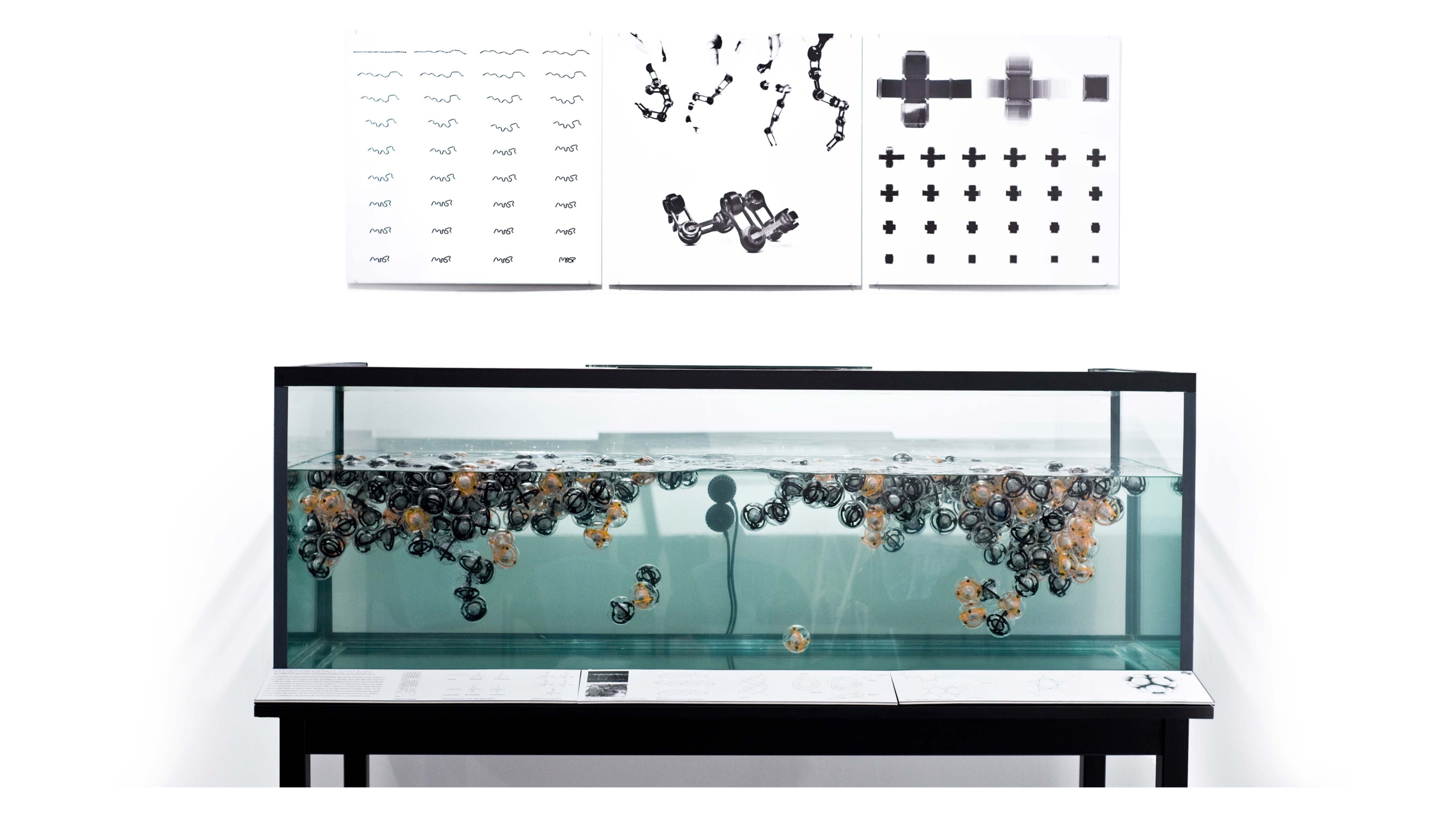
We often get asked how biology inspires us, is our work biomimetic, etc. I have a yes and no answer, which is that we’re certainly inspired by biology, and we work a lot with molecular biologists, chemists, geneticists, materials science folks, etc. So certainly there’s a thread of the “bio” in our work, and even some of our projects are directly linked to it, like a DNA printing project that we did recently, literally printing with DNA, in 2-D. We’ve also done some structures that folded proteins and viruses that self-assemble. But I’m also careful to never argue that our work is biomimetic, and I have a few reasons for that. One of the reasons is that I think biology is fascinating but I think many other things are also fascinating. it’s a little bit of a trap to think that biology is the only good example. There are many inorganic systems and scenarios that are just as interesting, such as synthetic chemistry, or even macroscale scenarios, such as the movement of people or astrophysical phenomena. Many other, non-biological, things have the same fundamental principles that we’re interested in studying, which is the non-top-down construction of precise behaviors, precise structures, etc. Biology is a good example but it’s only one example.
I think that it has become a sort of dogma. If I say that we’re following biology then for some reason our work is good, as if we have to accept it as being useful or helpful for the world. I think that’s dangerous because there are a lot of studies that have shown that biology is certainly not always optimal, that many solutions that have evolved biologically have done so from very specific conditions. Take a moment in time when a certain species had to overcome a challenge, which led to a mutation that was useful. If you move to a very different scale or to a very different point in time, all of the constraints are different and so that solution may not be the best solution. In fact it’s almost guaranteed to not be the best solution because it’s not optimal overall as a system, it’s a local decision. I’m a little bit worried when we try to transplant this to say that biomimetic systems are the future of engineering. There’s a lot we can learn, but we have to be careful to not learn everything or take everything for granted and to transplant it. I think the real interest is in the scalability of these fundamental principles. That self-assembly can transfer across scales, across domains.
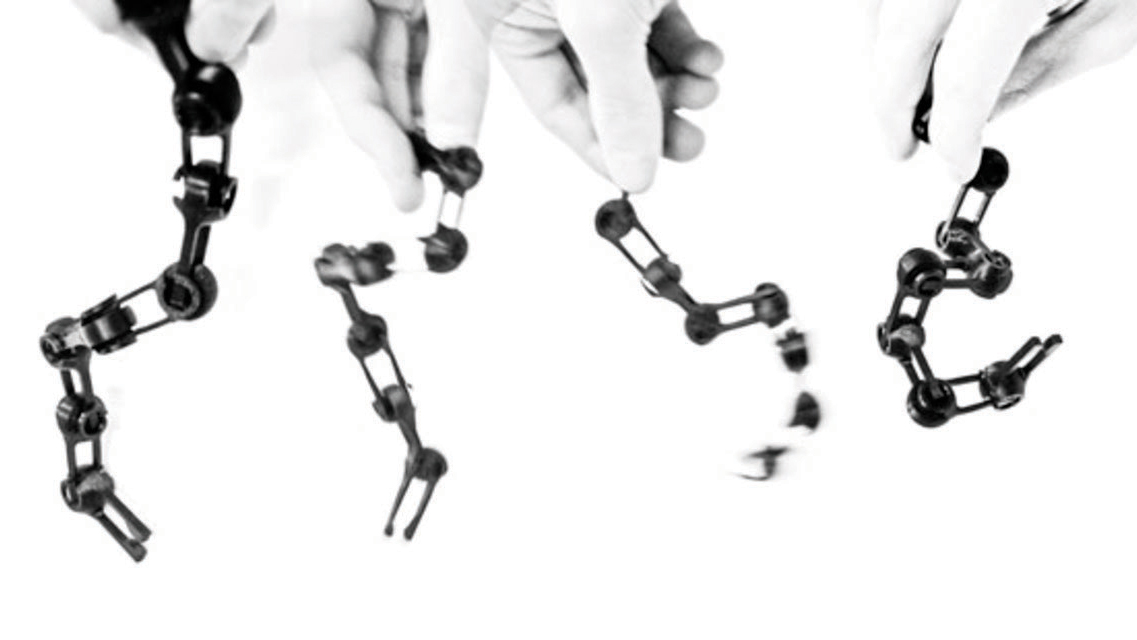
Stream: A very interesting aspect of this Self-Assembly Lab for me is its cross-disciplinarity. You are an architect, working every day with biologists and many other different fields of science. Is that something that MIT really allows and promotes?
Skylar Tibbits: Some of our collaborators are at MIT and some are not. We work with folks at Harvard and with researchers at the Scripps Research Institute in California: kind of across the board. MIT has this emphasis on a cross-disciplinary mentality. If you walk down MIT’s Infinite Corridor, first of all you have no idea when you go from one building to the next. Secondly, you have no idea whether you’re in engineering, architecture, or the material sciences department. It kind of fosters this mashed-up convergence of disciplines, like the embodiment of its campus. I think that has sort of rubbed off. We have something to offer as designers and I think more than ever architects are useful, though we may not even realize it. But it’s also useful to learn from other disciplines who also have something to offer that we don’t have. It has just become part of our work, we try to be inspired and collaborate with people outside of our own industry.
Programming and autonomy
Stream: You are also working on the idea of 4-D printing. Could you explain the evolution between 3-D and 4-D printing?
Skylar Tibbits: Four-dimensional printing is essentially the idea that you want to print with smart materials, that’s the common understanding of it. Meaning that instead of printing static objects that are either prototypes or final products, why not print objects that have programmed behaviors and can either change shape or property on demand. So you’re printing things that are active, not static.
The way that we do that right now is we print with multiple materials with different properties that respond to external or internal energy. Right now we print with one polymer that expands when it meets water and one polymer that’s fairly rigid. That rigid polymer is essentially the structure and the geometric information, the angle and the precision. We have different types of plastics that behave differently in different conditions, so you can print multiple materials that have those responses and by putting them in very precise locations, you can predict what kind of structures will occur when something happens. So you can say, “When this happens, transform into this or to that.” It’s a very different perspective on printing than trying to compete with traditional manufacturing processes.
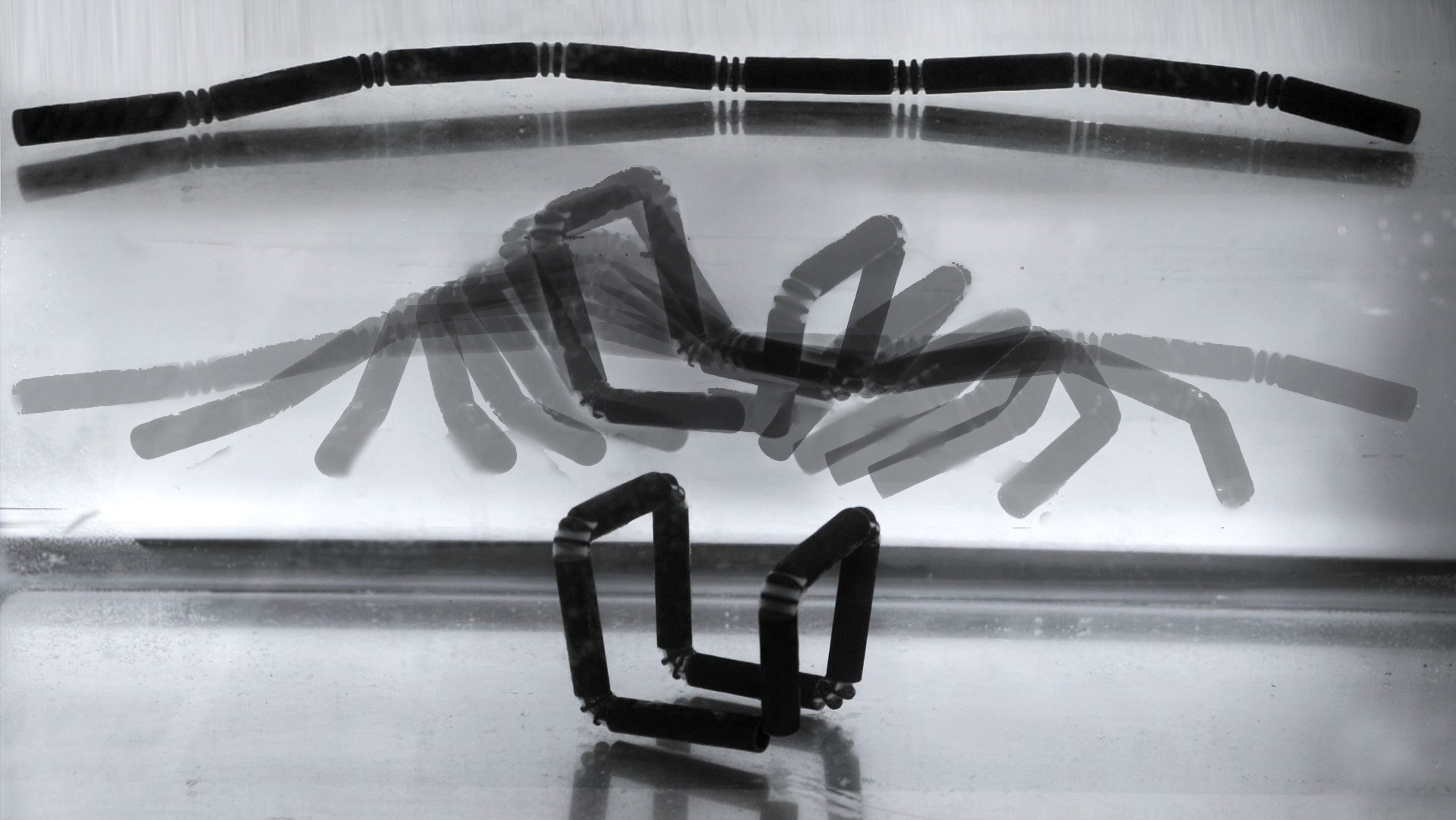
Stream: This raises two questions for me. Firstly, how do you see the role of the designer in a process in which somehow the shape or the form doesn’t start with the top-down act of drawing, but through a self-organized process? Secondly, do you have an example of research or an application that is now starting to function at the scale of a building?
Skylar Tibbits: I think the role of the designer is in collaboration. In the past, the mantra was that the designer is the top, and that we force materials and machines to do what we want to embody our design. I think we’re moving toward a moment when the machine can do things that we can’t do, that the designer can do things the machine can’t do, and materials can do other things that both the machine and the designer can’t do. So we’re trying to collaborate with machines and materials in response to energy, and the way that happens is the designer’s role might be to come up with the end goals or with momentary conditions. The designer’s role might be the higher functionality, or let’s say the composition of materials to guide a structure one way or another. The machine’s role is much more precise: repetitive tasks, precision, placement of materials, that sort of thing. The material’s role is physics, to interact with its environment, to interact with itself, and to embody those programs that have been embedded in it. It’s not that we can’t do anything because the material makes the decisions, rather we’re embedding programs for the material to enact, but the material has a behavior and a role in that collaboration as well.
As for your second question, on the building scale most of our work was looking at two different kinds of large scale systems: either systems with many, many parts, or that are literally large. We’re interested in both. We do somewhat large things in comparison to robotics, material science, or biology, but compared to architecture I would say we’re still not very large in terms of size. But we have done a lot of work on many, many parts—hundreds of thousands of parts—that assemble simultaneously, so we’re taking that strategy and trying to move toward larger-scale systems. We’re definitely not at the construction stage yet, and may never be, but we’re also working in other domains like large-scale manufacturing and space, different applications like that. I guess you’re also interested in 4-D printing and its applications in construction?
My take is that 4-D printing is a broad process or technique with applications across the board. Anywhere that we traditionally would use motors or sensors to make smart or transformative systems is a ripe application for 4D printing because you can embed that transformation and the information in the materials themselves now. There are many, many different products, from sportswear to infrastructure, valve mechanisms to aerospace, and shape-changing wings to automotive tires that change shape with road conditions. If you look at the architecture and construction industry, you know there’s definitely been at least some type of movement, or some interest over the past decades about transformative structures pointing toward mechanical actuation mediating the environment. But there’s always this discussion of how long will those structures actually work and how much energy is needed to control them.
In my opinion, the application there would be if you either want behavioral change to be the environment. Yet there’s geometric or structural change—you can think about earthquake scenarios with facade geometries that transform, and there are many applications that lots and lots of applications that people have been interested in. Our vision would be to step away from the electromechanical actuation communication sensing, because there are a number of issues there in terms of costs, failure modes, difficulty in programmability and control, all that kind of stuff. That makes robotics for architecture probably not a scalable means at the moment. Maybe in the future, but I think there’s a more elegant solution if we can utilize materials and geometry that respond to internal and external energy, then you can get the same type of actuation and the same type of sensing that you can with motors and traditional notions of computing, but it’s much more robust, much cheaper, and much easier to control and assemble. I think those are the applications on the architectural scale.
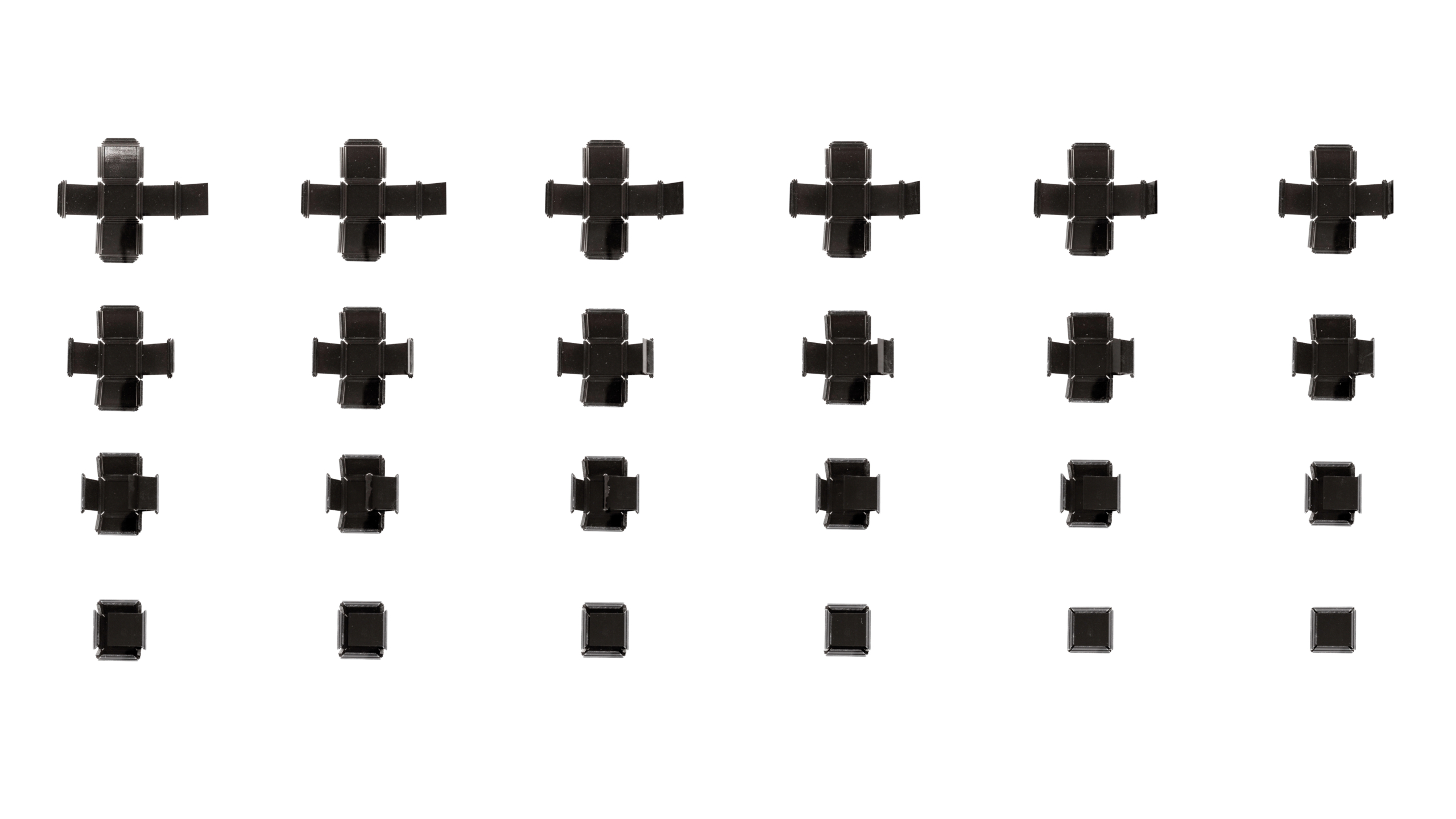
Stream: Maybe we could conclude by this word, “elegant”, that you use a lot.
Skylar Tibbits: I guess I’m arguing for an elegant solution and I’m pointing toward the traditional engineering perspective—if you have a challenge you will normally throw all means possible at it: money, motors, man-hours, computing power, sensors, etc. I’m talking about a more simple and robust solution. I mean elegant as more and more refined, a simple solution that’s more robust, cheaper, more scalable, and has fewer components, for a start. Usually it happens over time and you find easier ways to do it without all the complexity. So that’s what I’m describing as elegant, but obviously it could have an aesthetic side too and because we have a design and architecture background, that flows into our work naturally. I think it’s useful, and it sets us apart from a lot of our science or engineering colleagues. Aesthetics is an important aspect. Often, the material systems that we’re designing are the aesthetics—there’s no added component: the choice of materials and geometry becomes the aesthetic.
(This article was published in Stream 03 in 2014.)

